Introduction:
Welcome to the amazing realm of drones, where imagination takes off and potential soars from one new high. In our quest to unravel the mysteries behind these unmanned marvels, we embark on a journey to answer the fundamental question: “What is a drone?”
This article aims to be your ultimate guide from knowing the basics of how drone operates to learn more about different kinds, uses and development arcs of this technology. Buckle up as we dive deep into the dynamics of drone technology, giving your insight beyond skin-deep.
Whether you are a newcomer who is vaguely interested in drones or an experienced hobbyist, let us take this ride along the seas of knowledge to discover how these seemingly magical devices have become part of our modern lives.
Understanding the Basics
In recent years, drones are often used to denote technological advancements as they can also be referred to Unmanned Aerial Vehicles the UAVs or Unmanned Aircraft Systems UAS. In this section, we will simplify the basics so that you can appreciate what drones are and how they work.

-
What is a drone?
A drone is an unmanned, remotely piloted aircraft which can be flown autonomously or through a human operator located on the ground. These are versatile devices that appear in a range of shapes and sizes, outfitted with sophisticated technology for performing many chores.
-
Drone Definition:
Drones, in essence, are vehicles without a human pilot on board. Instead, they are controlled remotely or autonomously, utilizing sophisticated software and sensors for navigation.
-
How Do Drones Work?
The functioning of drones is a mix of complex technology. The control system and steered either by a human operator or pre-set programmed instructions controls the drones’ flight, direction as well
-
What Does a Drone Look Like?
Drones come in various designs and configurations. Common features include a lightweight frame, multiple propellers, and often a camera or payload system. The appearance varies based on the drone’s intended use, from recreational quadcopters to professional-grade hexacopters or octocopters.
-
How Much Does a Drone Cost?
Drone prices span a wide range, catering to different consumer needs. Basic recreational drones can be affordable, while professional or specialized drones with advanced features may come with a higher price tag. Understanding your requirements is crucial in determining the most suitable drone for your purposes.
-
Is Drone Flying Legal?
Navigating the legal aspects of drone flying is essential. Regulations vary across regions, covering aspects such as registration, flight altitude, and no-fly zones. Ensuring compliance with local laws is crucial to enjoying the benefits of drone technology responsibly.
-
Do Drones Show Up on Radar?
Addressing concerns related to airspace safety, drones are equipped with technologies like Automatic Dependent Surveillance–Broadcast (ADS–B) to broadcast their position. This helps prevent collisions and ensures safe integration with traditional manned aircraft.
As we unravel the intricacies of “What is a Drone?” in this section, we lay the foundation for a deeper exploration into the diverse world of drone technology. Stay tuned as we dive into specific types of drones and their unique features in the next segment.
Exploring Drone Types
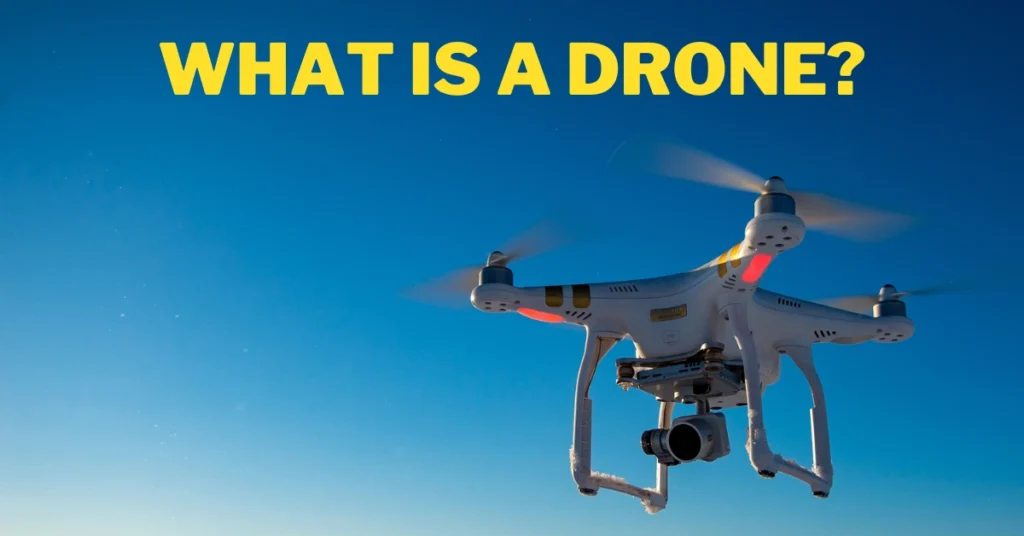
In this section, we embark on a journey to understand the various types of drones, each tailored to specific needs and applications. From personal use to commercial endeavors, the diverse world of drone technology unfolds.
- Personal Drones
Personal drones or we put consumer drone are made for recreational users and hobbyists. These drones are usually small, readily controllable and equipped with features such as built-in cameras for taking aerial photos. Personal drones unlock the adventurous world of unmanned flight, capture breathtaking sceneries and if required, even pursue an adrenalin rush in a sport such as drone racing.
- Commercial Drones
Designed for professional applications, commercial drones go beyond leisure pursuits. These drones are equipped with advanced capabilities, making them suitable for tasks such as aerial surveying, mapping, and inspections. Professionals in industries like agriculture, construction, and real estate harness the power of commercial drones to enhance efficiency and gather valuable data.
- Drone Vs. UAS Vs. UAV
Understanding terminology is important in drone land navigation. There are differences, although they are often used interchangeably. Drones include both unmanned aerial vehicles (UAS) and unmanned aerial vehicles (UAVs). UAS refers to the entire system, including aircraft, ground systems, and communications. UAV refers specifically to unmanned flying vehicles, emphasizing the aircraft itself.
As we dive deeper into the nitty-gritty of personal and commercial drones, the differences become apparent, providing deeper insights into the best use of this technology.
Join us about in the next section as we identify the myriad applications that provide indispensable drones in various industries
Drone Features and Components
In this section, we dissect the anatomy of drones, exploring the common features and components that define these unmanned marvels. Understanding the building blocks of drones is crucial to appreciating their capabilities and functionalities.
- Common Features and Components
Drones, irrespective of their types and applications, share common features and components that contribute to their functionality. Let’s break down these essential elements:
- Frame: The frame serves as the structural foundation, determining the drone’s shape and size. Materials vary, with lightweight yet durable options like carbon fiber being popular choices.
- Motors and Propellers: Drones are powered by electric motors that drive propellers, generating thrust for flight. The number and arrangement of motors and propellers vary among different drone designs.
- Power Source: Drones are powered by rechargeable batteries, providing the energy required for propulsion and onboard systems. Battery capacity influences flight time, with advancements in battery technology continually improving performance.
- Control System: The control system is the brain of the drone, managing flight parameters, navigation, and communication. It can be manually operated by a remote pilot or operate autonomously through pre-programmed instructions.
- Sensors: Drones are equipped with sensors such as accelerometers, gyroscopes, and GPS for precise navigation and stabilization. Advanced drones may also feature obstacle avoidance sensors to enhance safety during flight.
- Camera or Payload System: Many drones, especially those used for commercial purposes, come equipped with cameras or payload systems. These additions enable functions like aerial photography, videography, or the delivery of payloads for specific applications.
- Communication Systems: Drones rely on communication systems to receive commands from the operator and transmit data. This includes radio frequency (RF) communication and, in some cases, wireless networks.
Understanding these features provides a glimpse into the engineering marvel that drones represent. The synergy of these components enables drones to perform a myriad of tasks, from capturing breathtaking aerial footage to executing complex industrial inspections.
As we proceed in our exploration, the next section will focus on unraveling the practical applications of drones, showcasing how these features and components come together to make drones indispensable tools in various fields.
Unveiling Drone Applications
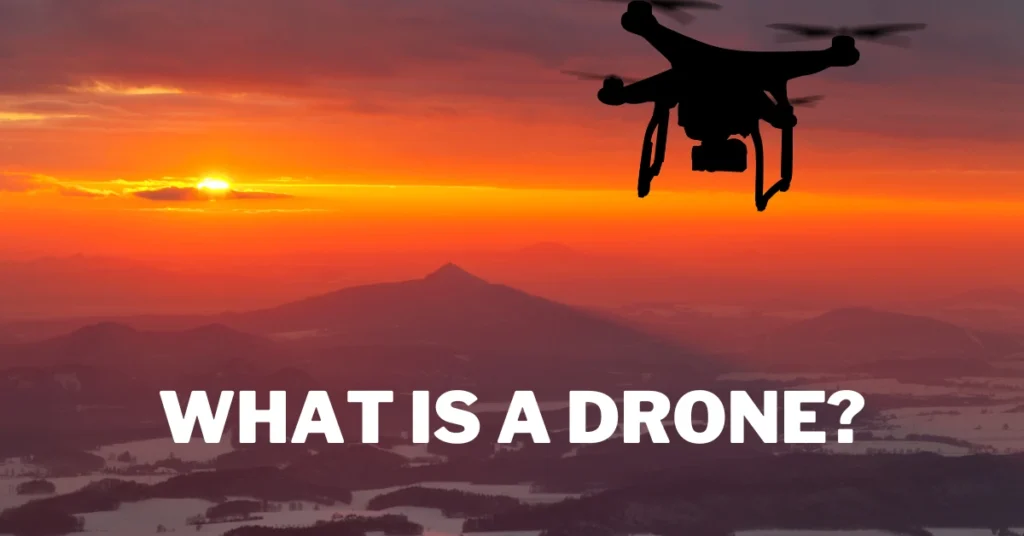
In this section, we delve into the diverse applications that make drones indispensable across various industries. From commercial endeavors to enhancing safety and efficiency, drones prove to be versatile tools with a multitude of practical uses.
- Commercial and Enterprise Drone Applications
Commercial drones have transcended recreational use, finding applications in numerous sectors. Here, we explore how these unmanned aerial vehicles contribute to industry-specific tasks:
- Surveillance: Drones equipped with advanced cameras and sensors are employed for surveillance purposes. Whether monitoring large areas, tracking wildlife, or enhancing security, drones provide an aerial perspective that traditional methods cannot match.
- Surveying: In industries like construction and agriculture, drones facilitate efficient surveying and mapping. High-resolution cameras and LiDAR sensors allow for detailed mapping of terrains, aiding in project planning and land assessment.
- Photography & Videography: The integration of cameras with drones has revolutionized aerial photography and videography. Drones offer unique perspectives for capturing stunning visuals in industries such as filmmaking, real estate, and tourism.
- Insurance Claims: Assessing damage after natural disasters or accidents can be challenging. Drones equipped with cameras assist insurance professionals in surveying and documenting damage, streamlining the claims process.
- Search & Rescue: Drones play a vital role in search and rescue operations, particularly in challenging terrains. Equipped with thermal imaging cameras and GPS technology, they help locate missing persons or assess disaster-stricken areas.
- Inspections: Industrial inspections, whether for infrastructure or utilities, can be time-consuming and risky. Drones equipped with specialized sensors and cameras offer a safer and more efficient alternative for inspecting structures like bridges, power lines, and pipelines.
- Package Delivery: Companies are exploring the use of drones for delivering packages to remote or hard-to-reach areas. This application has the potential to revolutionize logistics and enhance the speed and efficiency of deliveries.
Understanding the myriad applications of commercial drones showcases their adaptability and efficiency across diverse sectors. As we continue our exploration, the next section will focus on the historical evolution of drones, providing insights into how this technology has evolved over time. Join us as we uncover the journey of drones from their inception to the present day.
Tracing the Evolution
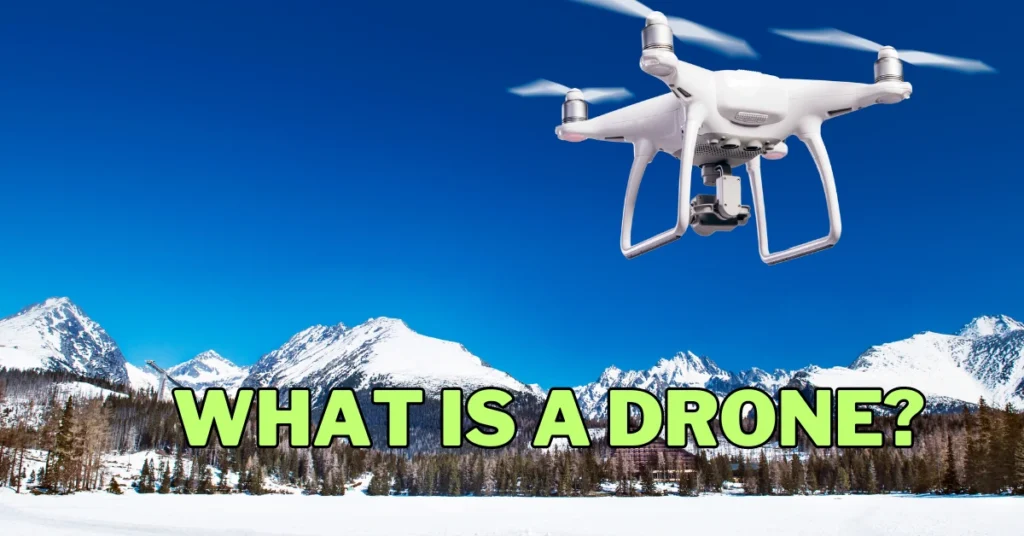
In this section, we embark on a historical journey to explore the evolution of drones. Understanding the origins and evolution of this technology provides valuable insight into the key factors shaping the current landscape of unmanned aerial vehicles.
- The History of Drones
The concept of unmanned aerial vehicles dates back further than one might think. The roots of drone technology can be traced to early 20th-century experiments with radio-controlled aircraft. However, it was during World War I and World War II that significant advancements occurred.
- World War I: The earliest use of unmanned aerial vehicles can be linked to the development of “aerial targets” during World War I. These early drones were essentially radio-controlled aircraft used for target practice by anti-aircraft gunners.
- World War II: The utilization of drones expanded during World War II, with both Allied and Axis powers employing them for various purposes. The famous German V-1 rocket, an early cruise missile, can be considered a precursor to modern autonomous weaponry.
- Post-World War II: The Cold War era saw further developments in drone technology, particularly for reconnaissance purposes. Drones were used for surveillance along the borders, providing valuable intelligence without risking human pilots.
- UAV Reception and Drone Regulations As drone technology progressed, so did the need for regulations to ensure safe and responsible usage. The reception of Unmanned Aerial Vehicles (UAVs) in civilian spaces raised concerns about privacy, safety, and airspace integrity.
- Regulatory Milestones: Governments around the world began implementing regulations to govern the use of drones. These regulations cover aspects such as registration, flight altitude restrictions, and no-fly zones near sensitive areas like airports.
- Challenges and Solutions: The growing popularity of drones presented challenges, including potential misuse and safety risks. Regulatory bodies and technology solutions have emerged to address these challenges, striking a balance between fostering innovation and ensuring public safety.
Understanding the historical context and regulatory framework is essential in comprehending the responsible and ethical use of drone technology. As we move forward in our exploration, the next section will shed light on the training aspects of drone technology, highlighting the skills and knowledge required for safe and effective drone operation. Join us as we navigate the educational landscape of drone technology.
Navigating Regulations and Training
In this section, we explore the crucial aspects of UAV reception and drone regulations. Understanding the regulatory landscape and the importance of proper training is essential for responsible and safe drone operation.
- UAV Reception and Drone Regulations
As drones became more accessible to the public, concerns arose regarding their impact on privacy, safety, and airspace integrity. Governments worldwide responded by introducing regulations to ensure the responsible use of Unmanned Aerial Vehicles (UAVs).
- Regulatory Landscape: Different countries have established varying sets of regulations governing drone usage. These regulations often cover aspects such as registration, flight altitude limitations, and no-fly zones near critical areas like airports or government facilities.
- Privacy Considerations: UAVs equipped with cameras raise privacy concerns. Regulations may include guidelines on obtaining consent for aerial photography or restrictions on capturing images in certain locations.
- Airspace Safety: Ensuring the safe integration of drones into airspace is a top priority. Regulations outline permissible flight altitudes, requirements for maintaining line-of-sight with the drone, and restrictions in controlled airspace.
- Training in Drone Technology
Effective drone operation goes beyond understanding regulations; it requires comprehensive training. Whether you’re a recreational user or a professional operator, acquiring the necessary skills is crucial for safe and responsible drone piloting.
- Pilot Certification: Some regions require drone operators to obtain certification, demonstrating their understanding of drone regulations and their ability to operate drones safely. Certification programs often cover topics such as airspace rules, weather conditions, and emergency procedures.
- Flight Schools and Courses: Various institutions and online platforms offer drone pilot training programs. These courses cover practical aspects of drone operation, including flight maneuvers, pre-flight checks, and emergency protocols.
- Simulation Training: Simulators provide a risk-free environment for pilots to practice flying drones. This training method enhances skills such as navigation, obstacle avoidance, and emergency response without the potential risks associated with real-world flights.
- Stay Informed: Drone technology and regulations are continually evolving. Staying informed about the latest developments, software updates, and regulatory changes is essential for maintaining safe and compliant drone operations.
By delving into the regulatory landscape and emphasizing the importance of training, this section equips readers with the knowledge necessary for responsible drone use. As we progress in our exploration, the next section will turn our attention to the future outlook of drone technology, unveiling the potential advancements and transformative changes awaiting this dynamic field. Join us in contemplating the exciting future of drones.
What is the Future Outlook for Drone Technology?
In this section, we gaze into the crystal ball of technology, exploring the potential advancements and transformative changes that await the field of drone technology. From enhanced capabilities to new applications, the future of drones holds promises of innovation and evolution.
- Technological Advancements
The future of drone technology is poised for continuous advancement, driven by ongoing research and development. Several key areas are expected to witness significant progress:
- Autonomous Navigation: Advancements in artificial intelligence and machine learning are likely to lead to more autonomous drones capable of navigating complex environments without constant human intervention.
- Battery Technology: Longer flight times and improved energy efficiency are anticipated with advancements in battery technology. This could extend the range and endurance of drones, unlocking new possibilities for applications in various industries.
- Sensor Integration: The integration of advanced sensors, such as improved cameras and LiDAR technology, will enhance a drone’s ability to collect data with higher precision. This can benefit applications like surveying, mapping, and inspection.
- Swarm Technology: The concept of drone swarms, where multiple drones operate collaboratively, holds great potential. This could revolutionize tasks like search and rescue, environmental monitoring, and even entertainment events.
- New Applications on the Horizon As technology evolves, so do the potential applications of drones. The future holds exciting possibilities for the integration of drones in various industries:
- Healthcare Delivery: Drones may play a role in delivering medical supplies to remote or inaccessible areas, especially in emergency situations.
- Smart Cities: Drones could contribute to creating smarter, more efficient cities by assisting in tasks such as traffic monitoring, environmental sensing, and infrastructure inspections.
- Environmental Monitoring: Drones equipped with specialized sensors can monitor environmental changes, helping researchers and authorities track climate patterns, wildlife habitats, and pollution levels.
- Entertainment and Events: Drone light shows, aerial displays, and immersive experiences are expected to become more prevalent in the entertainment industry.
- Regulatory Developments As drone technology advances, regulatory bodies will likely adapt to address new challenges and ensure responsible use:
- Beyond Visual Line of Sight (BVLOS) Operations: Regulatory frameworks may evolve to accommodate BVLOS operations, allowing drones to operate outside the operator’s direct line of sight, opening up new possibilities for applications like long-range inspections and deliveries.
- Urban Air Mobility (UAM): With the development of drone taxis and passenger drones, regulatory frameworks will need to address safety, airspace management, and infrastructure requirements for urban air mobility.
- Privacy and Security Measures: As drones become more widespread, regulations may strengthen privacy protection measures and address concerns related to the misuse of drone technology.
The future of drone technology holds immense promise, with potential advancements and applications that could reshape industries and daily life. As we conclude our exploration, we invite you to stay tuned for the latest developments in this dynamic and ever-evolving field. The journey of drones continues, propelling us into a future where the skies are no longer limits but expansive frontiers of innovation.
Additional Insights
In this section, we delve into various aspects that add depth and context to our exploration of drone technology. From sustainability considerations to intriguing fun facts, this segment offers additional insights to enrich your understanding of this dynamic field.
- Drones and Sustainability
As technology progresses, the environmental impact of emerging innovations becomes a crucial consideration. In the case of drones, several sustainability aspects come into play:
- Energy Efficiency: Advances in drone design and propulsion systems aim to enhance energy efficiency, minimizing the ecological footprint of drone operations.
- Precision Agriculture: Drones contribute to sustainable farming practices by enabling precision agriculture. They can monitor crops, assess soil health, and optimize resource usage, promoting more sustainable and efficient farming methods.
- Wildlife Conservation: Drones play a role in wildlife conservation efforts, allowing researchers to monitor and protect endangered species without disturbing their habitats.
- Fun Facts About Drones
Exploring the world of drones wouldn’t be complete without a sprinkle of intriguing and entertaining facts:
- Drone Racing: Drone racing has emerged as a popular sport, where pilots maneuver small, agile drones through obstacle courses at high speeds.
- Pizza Delivery by Drone: In some regions, experiments have been conducted to deliver pizzas using drones, showcasing the potential for innovative applications in the food industry.
- Drone Swarms in Light Shows: Drone swarms have been employed in breathtaking light shows, choreographing thousands of drones to create mesmerizing patterns and displays in the night sky.
- Now That You’re a Drone Expert
As we conclude our comprehensive journey through the realms of drone technology, it’s essential to consider the role of individuals in this dynamic field:
- Staying Informed: The field of drone technology is ever-evolving. Staying informed about the latest trends, regulations, and technological advancements is crucial for individuals involved or interested in drone operations.
- Community Engagement: Engaging with the drone community through forums, events, and social media platforms provides opportunities to exchange knowledge, share experiences, and stay connected with fellow enthusiasts and professionals.
- Balancing Innovation and Responsibility: As a drone enthusiast or professional, finding the right balance between embracing innovation and adhering to responsible and ethical practices is key. This ensures the sustainable growth of drone technology and its positive impact on various industries.
In wrapping up our exploration, we hope this journey has not only expanded your knowledge of drone technology but has also ignited a curiosity to further explore the limitless possibilities that drones offer. As technology continues to unfold, so too will the horizons of innovation, and the skies will remain a canvas for the ever-evolving story of drones. Thank you for joining us on this adventure!
Conclusion: Unlocking the Skies of Innovation
In concluding our expedition through the intricacies of drone technology, we’ve soared through the fundamentals, explored diverse types, uncovered applications across industries, traced the historical evolution, navigated regulations, glimpsed into the future, and gained additional insights. The world of drones is not just a realm of flying machines but an ever-expanding frontier of innovation and limitless possibilities.
As we stand at the intersection of technological advancements and societal integration, it becomes clear that drones have transcended their initial roles to become indispensable tools in various facets of our lives. From transforming industries through efficient surveying and delivery systems to captivating us with mesmerizing light displays in the night sky, drones have woven themselves into the fabric of modern innovation.
The journey doesn’t end here; it propels us forward into a future where the skies remain open for exploration, and drone technology continues to unfold its wings of progress. Whether you’re an enthusiast, a professional operator, or simply curious about the world above, the story of drones invites you to stay connected, stay informed, and be part of the unfolding narrative of technological marvels in the boundless expanse of our skies.

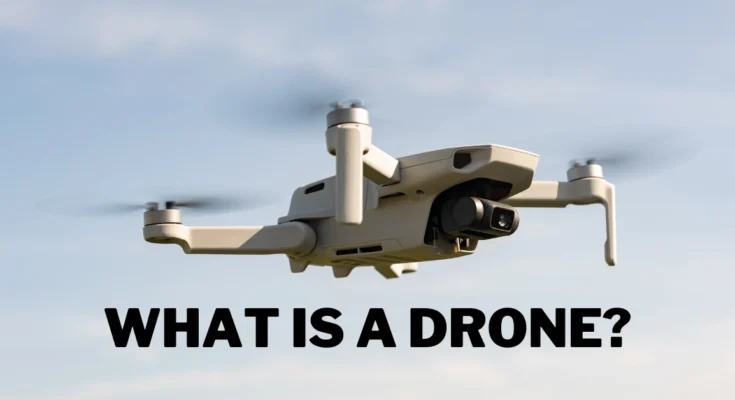
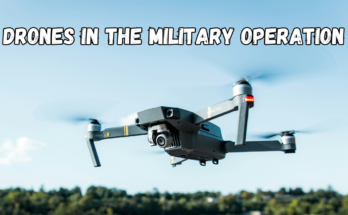
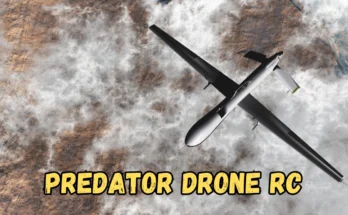
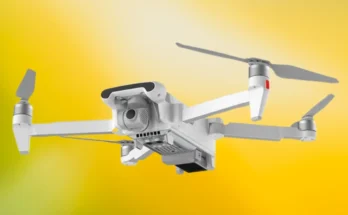
2 Comments on “What is a Drone? A Comprehensive Guide to Understanding”